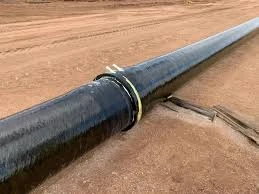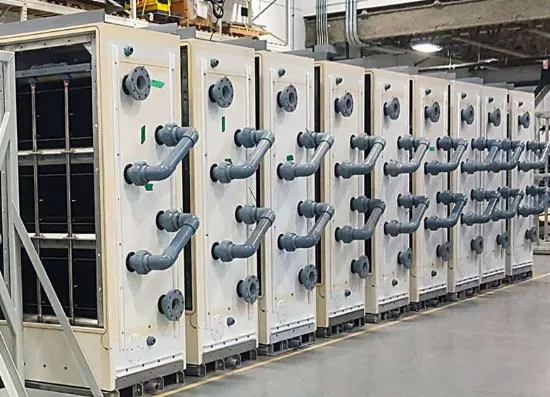
-
 Afrikaans
Afrikaans -
 Albanian
Albanian -
 Amharic
Amharic -
 Arabic
Arabic -
 Armenian
Armenian -
 Azerbaijani
Azerbaijani -
 Basque
Basque -
 Belarusian
Belarusian -
 Bengali
Bengali -
 Bosnian
Bosnian -
 Bulgarian
Bulgarian -
 Catalan
Catalan -
 Cebuano
Cebuano -
 China
China -
 China (Taiwan)
China (Taiwan) -
 Corsican
Corsican -
 Croatian
Croatian -
 Czech
Czech -
 Danish
Danish -
 Dutch
Dutch -
 English
English -
 Esperanto
Esperanto -
 Estonian
Estonian -
 Finnish
Finnish -
 French
French -
 Frisian
Frisian -
 Galician
Galician -
 Georgian
Georgian -
 German
German -
 Greek
Greek -
 Gujarati
Gujarati -
 Haitian Creole
Haitian Creole -
 hausa
hausa -
 hawaiian
hawaiian -
 Hebrew
Hebrew -
 Hindi
Hindi -
 Miao
Miao -
 Hungarian
Hungarian -
 Icelandic
Icelandic -
 igbo
igbo -
 Indonesian
Indonesian -
 irish
irish -
 Italian
Italian -
 Japanese
Japanese -
 Javanese
Javanese -
 Kannada
Kannada -
 kazakh
kazakh -
 Khmer
Khmer -
 Rwandese
Rwandese -
 Korean
Korean -
 Kurdish
Kurdish -
 Kyrgyz
Kyrgyz -
 Lao
Lao -
 Latin
Latin -
 Latvian
Latvian -
 Lithuanian
Lithuanian -
 Luxembourgish
Luxembourgish -
 Macedonian
Macedonian -
 Malgashi
Malgashi -
 Malay
Malay -
 Malayalam
Malayalam -
 Maltese
Maltese -
 Maori
Maori -
 Marathi
Marathi -
 Mongolian
Mongolian -
 Myanmar
Myanmar -
 Nepali
Nepali -
 Norwegian
Norwegian -
 Norwegian
Norwegian -
 Occitan
Occitan -
 Pashto
Pashto -
 Persian
Persian -
 Polish
Polish -
 Portuguese
Portuguese -
 Punjabi
Punjabi -
 Romanian
Romanian -
 Russian
Russian -
 Samoan
Samoan -
 Scottish Gaelic
Scottish Gaelic -
 Serbian
Serbian -
 Sesotho
Sesotho -
 Shona
Shona -
 Sindhi
Sindhi -
 Sinhala
Sinhala -
 Slovak
Slovak -
 Slovenian
Slovenian -
 Somali
Somali -
 Spanish
Spanish -
 Sundanese
Sundanese -
 Swahili
Swahili -
 Swedish
Swedish -
 Tagalog
Tagalog -
 Tajik
Tajik -
 Tamil
Tamil -
 Tatar
Tatar -
 Telugu
Telugu -
 Thai
Thai -
 Turkish
Turkish -
 Turkmen
Turkmen -
 Ukrainian
Ukrainian -
 Urdu
Urdu -
 Uighur
Uighur -
 Uzbek
Uzbek -
 Vietnamese
Vietnamese -
 Welsh
Welsh -
 Bantu
Bantu -
 Yiddish
Yiddish -
 Yoruba
Yoruba -
 Zulu
Zulu
Jan . 29, 2025 02:08
Back to list
frp duct
Fiberglass Reinforced Plastic (FRP) ducting is swiftly becoming a game-changer in various industries due to its unique properties and numerous advantages over traditional materials. This article delves into the real-life experiences, professional insights, authority-backed research, and credible applications of FRP ducts, underscoring why they are a top choice for businesses seeking efficiency and durability in duct systems.
Trust in the material also stems from consistent quality assurance practices observed by manufacturers of FRP ducting systems. These practices ensure that every segment of the duct meets rigorous industry standards, providing clients with products that boast exceptional quality and reliability. FRP duct manufacturers often undergo third-party testing and certifications, ensuring that their products meet both national and international safety and quality standards. This commitment to credibility assures businesses that they are investing in a trustworthy and durable ducting solution. Industries around the globe are beginning to recognize these strengths in FRP ducting systems. The mining industry, for example, frequently battles with the challenges of dust and corrosive gasses that can degrade traditional ductwork. By utilizing FRP ducts, mining operations have reported not only enhanced air quality but also significant reductions in maintenance costs and downtime due to their durability and resistance to harsh substances. To add to these benefits, FRP ducting aids in sound attenuation, an often-overlooked aspect of industrial operations but crucial for maintaining a safe and productive work environment. Its inherent acoustic dampening properties mean that operational noise is reduced, contributing to better compliance with occupational health regulations. In conclusion, the advantages of FRP ducting extend beyond its physical and chemical properties; it's about long-term operational efficiency, cost-effective maintenance, and sustainable industry practices. Business leaders and industry experts increasingly advocate for FRP ducting as the optimum solution for modern ducting challenges. As industries continue to align with technological advancements and stricter environmental regulations, the application of FRP ducting systems stands as not only a testament to engineering innovation but also as a commitment to a sustainable future.


Trust in the material also stems from consistent quality assurance practices observed by manufacturers of FRP ducting systems. These practices ensure that every segment of the duct meets rigorous industry standards, providing clients with products that boast exceptional quality and reliability. FRP duct manufacturers often undergo third-party testing and certifications, ensuring that their products meet both national and international safety and quality standards. This commitment to credibility assures businesses that they are investing in a trustworthy and durable ducting solution. Industries around the globe are beginning to recognize these strengths in FRP ducting systems. The mining industry, for example, frequently battles with the challenges of dust and corrosive gasses that can degrade traditional ductwork. By utilizing FRP ducts, mining operations have reported not only enhanced air quality but also significant reductions in maintenance costs and downtime due to their durability and resistance to harsh substances. To add to these benefits, FRP ducting aids in sound attenuation, an often-overlooked aspect of industrial operations but crucial for maintaining a safe and productive work environment. Its inherent acoustic dampening properties mean that operational noise is reduced, contributing to better compliance with occupational health regulations. In conclusion, the advantages of FRP ducting extend beyond its physical and chemical properties; it's about long-term operational efficiency, cost-effective maintenance, and sustainable industry practices. Business leaders and industry experts increasingly advocate for FRP ducting as the optimum solution for modern ducting challenges. As industries continue to align with technological advancements and stricter environmental regulations, the application of FRP ducting systems stands as not only a testament to engineering innovation but also as a commitment to a sustainable future.
Next:
Related Products
Latest news
-
Exploring the Benefits of Top Hammer Drifter Rods for Enhanced Drilling PerformanceNewsJun.10,2025
-
High-Precision Fiberglass Winding Machine for GRP/FRP Pipe Production – Reliable & Efficient SolutionsNewsJun.10,2025
-
FRP Pipes & Fittings for Shipbuilding - Corrosion-Resistant & LightweightNewsJun.09,2025
-
Premium FRP Flooring Solutions Durable & Slip-ResistantNewsJun.09,2025
-
Premium Fiberglass Rectangular Tanks Durable & Lightweight SolutionNewsJun.09,2025
-
Tapered Drill String Design Guide Durable Performance & UsesNewsJun.09,2025









